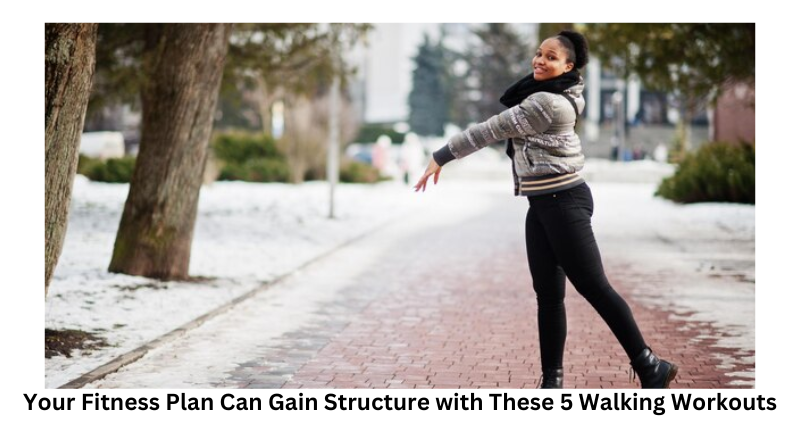Your Fitness Plan Can Gain Structure with These 5 Walking Workouts
One of the easiest and most accessible types of exercise is walking, but don’t make the mistake of utilizing it only as a cooldown or to reach a set number of steps. There are more advantages to an organized walking workout than simply increasing your level of activity; you will increase your endurance, speed up your recovery, and increase your daily mobility without putting undue strain on your joints. You just need the appropriate shoes to get started.
Squat, hinge, lunge, push, pull, and locomotion—your body moving through space—are the six cardinal patterns of the human movement system, according to physical therapist, personal trainer, and Pain Free Performance creator John Rusin, C.S.C.S., DPT. Walking is an essential component of a well-rounded movement system as it is a basic mode of mobility.
But if you want real fitness advantages, a leisurely walk is generally not going to cut it. “Walking can very quickly become exercise—it can become training,” Rusin explains, adding weight or increasing the speed. The secret is to get your heart rate into a trainable range; cardiovascular benefits occur when your heart rate is 60% or higher than your maximum heart rate.
Walking Exercises to Include in Your Daily Routine
To give your walking regimen some structure, consider these five exercises.
The Progression Walk
Start here if you’ve never considered walking as a form of exercise or are reestablishing a habit.
Keep track of how far you walk for five to ten minutes at a reasonable pace. The next time, try to cover more ground while walking for the same length of time. Continue making improvements until you can walk for extended lengths of time after ten minutes seems effortless.
Steady-State Incline Walk
This treadmill incline walk workout is a type of Zone 2 training—the heart rate range that improves endurance while keeping intensity manageable. You could do this type of exercise most days and feel fully recovered the next day.
First, calculate your max heart rate. The most basic way is with the formula 220 minus your age. During the workout, use a heart rate monitor or fitness tracker to stay in zone 2 range (60 to 70 percent of your max) or rely on rate of perceived exertion (RPE). A two or three on the RPE scale means you can maintain a conversation without pausing to take a breath.
Set your treadmill speed to around 3 mph, which is a comfortable walking pace. To achieve your Zone 2 heart rate, which is typically between three and seven percent, adjust the inclination. “Your gait won’t change at that small of an incline gravity will just be working against you,” suggests Rusin. “It’s an extremely easy method to get the most out of your time investment.”
Walk for at least 10 minutes, but longer is better. The World Health Organization recommends 150 minutes of moderate-intensity exercise a week, so Rusin says that 45 minutes at a time is a good goal.
As you get fitter, you’ll need to bump up the incline to stay in the right heart rate zone. While the viral 12-3-30 TikTok workout (3 mph, 12 percent incline, 30 minutes) works for some, Rusin notes that it may be too intense for beginners. “You shouldn’t be exceeding 80 percent of your max heart rate. That’s the most important thing,” he says.
Walking with Weights (Rucking)
Walking while wearing a weighted vest or backpack, or rucking, provides resistance to your stride, raising your heart rate and burning more calories without the high impact of running. Almost all of Rusin’s clients endorse this workout. However, you don’t have to walk up a hill while carrying a 50-pound backpack like you’re in fireman training—though you may if you’ve built up a solid foundation of fitness.
To begin, place weight on your torso using a backpack or weighted vest. “I wear a 29-pound vest when I walk, and my wife, who is roughly half my size, wears a 16-pound vest,” Rusin adds. If you’re new to rucking, Milica McDowell, DPT, vice president of operations at Gait Happens, suggests adding no more than 10 percent of bodyweight. Rusin advises against overloading your extremities with weights like ankle or wrists since doing so for longer distances (more than a farmer’s carry in the gym) might change your stride and cause problems for your shoulders, hips, and spine.
Whether you walk on a treadmill or with your dog around the neighborhood, it makes no difference.McDowell advises walking for up to thirty minutes at an even pace. As you advance, make the landscape more challenging by adding slopes, trails, or stairs, or by increasing your weight.
Intervals of Speed Walking
Do you want to walk a little harder? Experiment with your walking pace. To increase endurance, this organized interval workout alternates between two speeds: easy and rapid.
According to McDowell, easy should involve “walking at a pace where you can easily hold a conversation—you’re not having to pause talking to catch your breath.” You should fail the speak test if you walk at a “fast” pace, which means it would be hard to converse without stopping or gasping.
